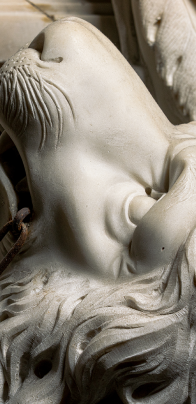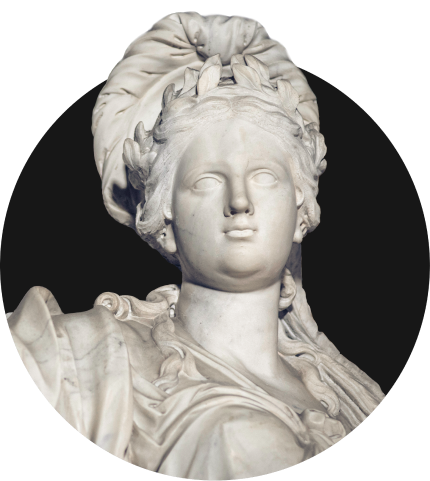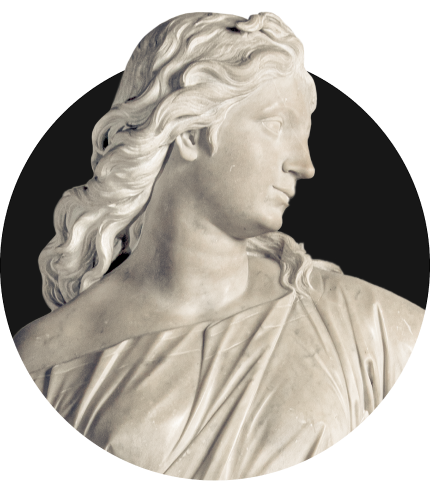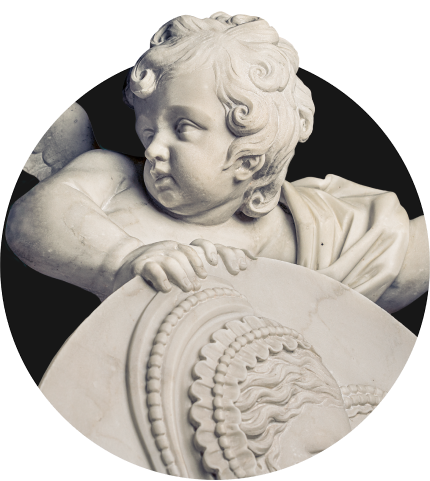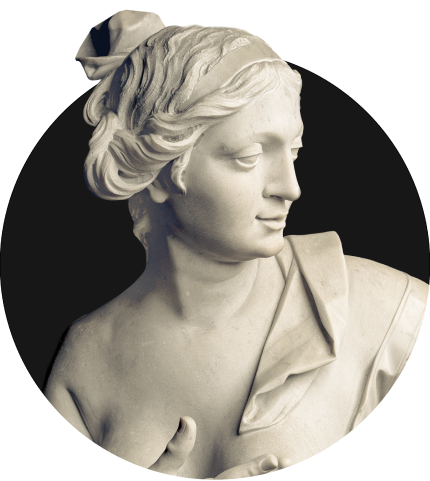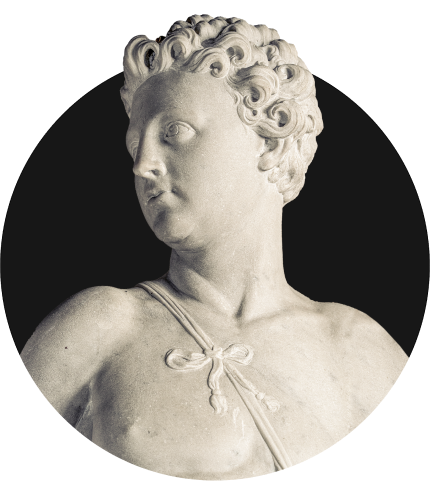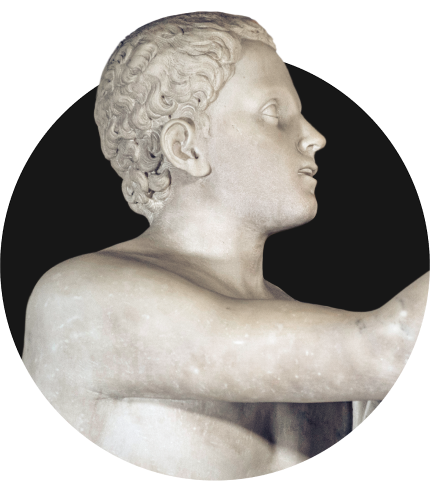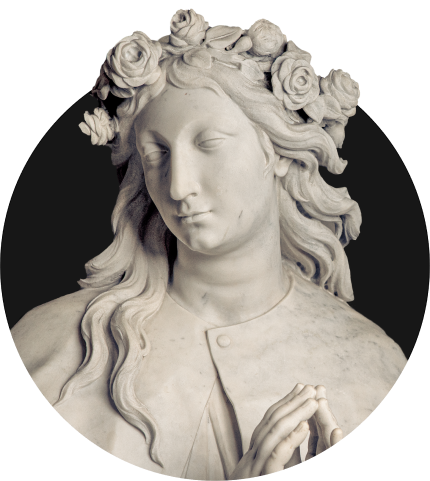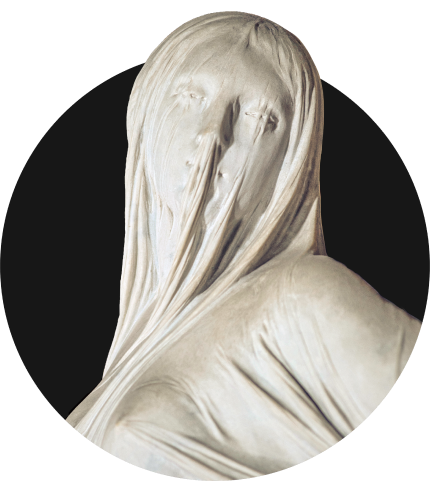
The statues
Self-control
The statues
Self-control
This monument commemorates Geronima Loffredo, paternal grandmother of Raimondo di Sangro. Self-control is a statue designed by Queirolo but which he could not make, because his relationship with the Prince of Sansevero soured, as evidenced by the signature of Francesco Celebrano on a document stating that he was a sculptor and not an inventor.
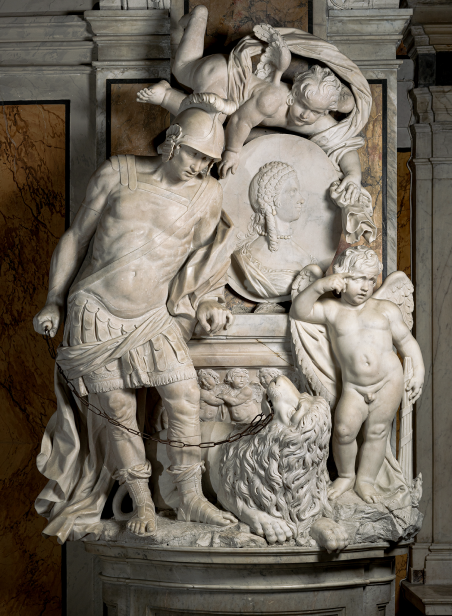
The group of statues
The symbol of the strength of character of the deceased, “never defeated by hostile destiny nor too exalted by fortune”, is this Roman soldier with a tame lion on a chain, almost hypnotised by the man’s gaze: intellect and will thus prevail over instinct, savage energy and the vanity of the passions.
The purely artistic result of this work is not to a very high level, the artistic outcome of this work is not of a particularly high level, and Raimondo di Sangro named it in his will as one of the few pieces in the Chapel that he wished to have redone by a more skilled artist. In Self-control, Celebrano shows his tendency to decorativism, interpreting Queirolo’s clay model without pathos. Two putti and a medallion with the profile of Geronima Loffredo complete the work. The memorial plaque dates from 1759.
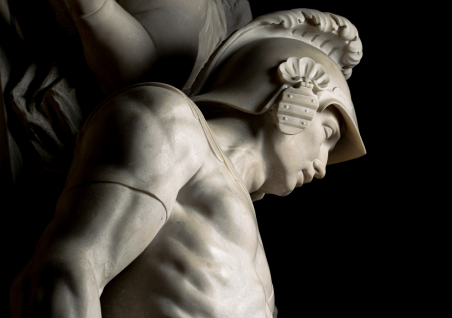
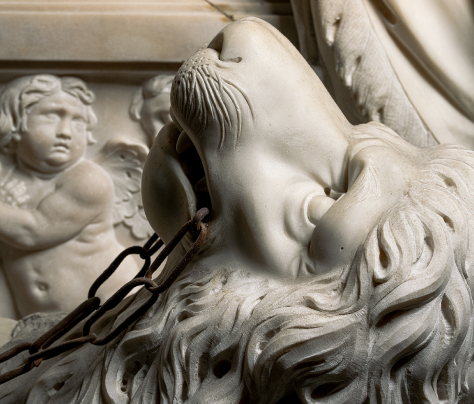
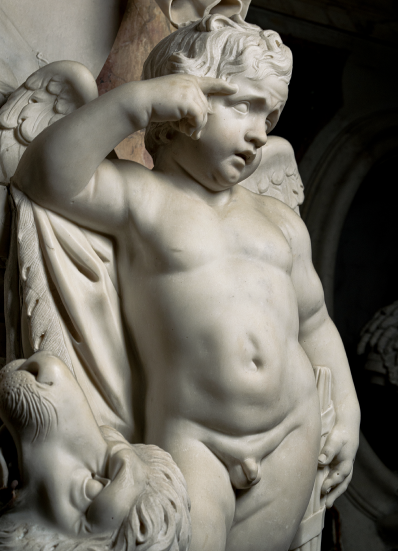
The meaning of the work
The subject of control over the passions is a classical theme of eighteenth-century Freemasonry, as well as an inescapable stage in any initiation process. In the iconography of the alchemists, the lion is sometimes symbol of primal matter, and sometimes – as with the “red” lion – the realisation of the philosopher’s stone.
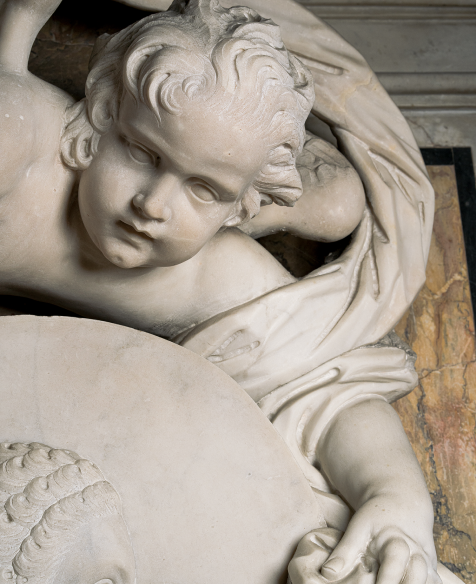
Gallery
Map
- High altar
- The monument to Alessandro di Sangro
- Modesty
- Saint Rosalia
- The sweetness of marital yoke
- Portrait of Vincenzo di Sangro
- Religious zeal
- Monument to Giovan Francesco
di Sangro, first Prince of Sansevero - Liberality
- Monument to Paolo di Sangro,
fourth prince - Decorum
- Monument to Giovan Francesco
di Sangro, third prince - Monument to Cecco di Sangro
- Monument to Giovan Francesco
di Sangro, fifth prince - The veiled Christ
- Glory of Heaven
- Disillusion
- Saint Oderisio
- Sincerity
- The tomb of Raimondo di Sangro
- The labyrinth floor
- Self-control
- Monument to Paolo di Sangro,
sixth prince - Education
- The anatomical machines
- Madonna and child
- Portrait of Raimondo di Sangro
- Monument to Paolo di Sangro,
second prince - Divine Love





